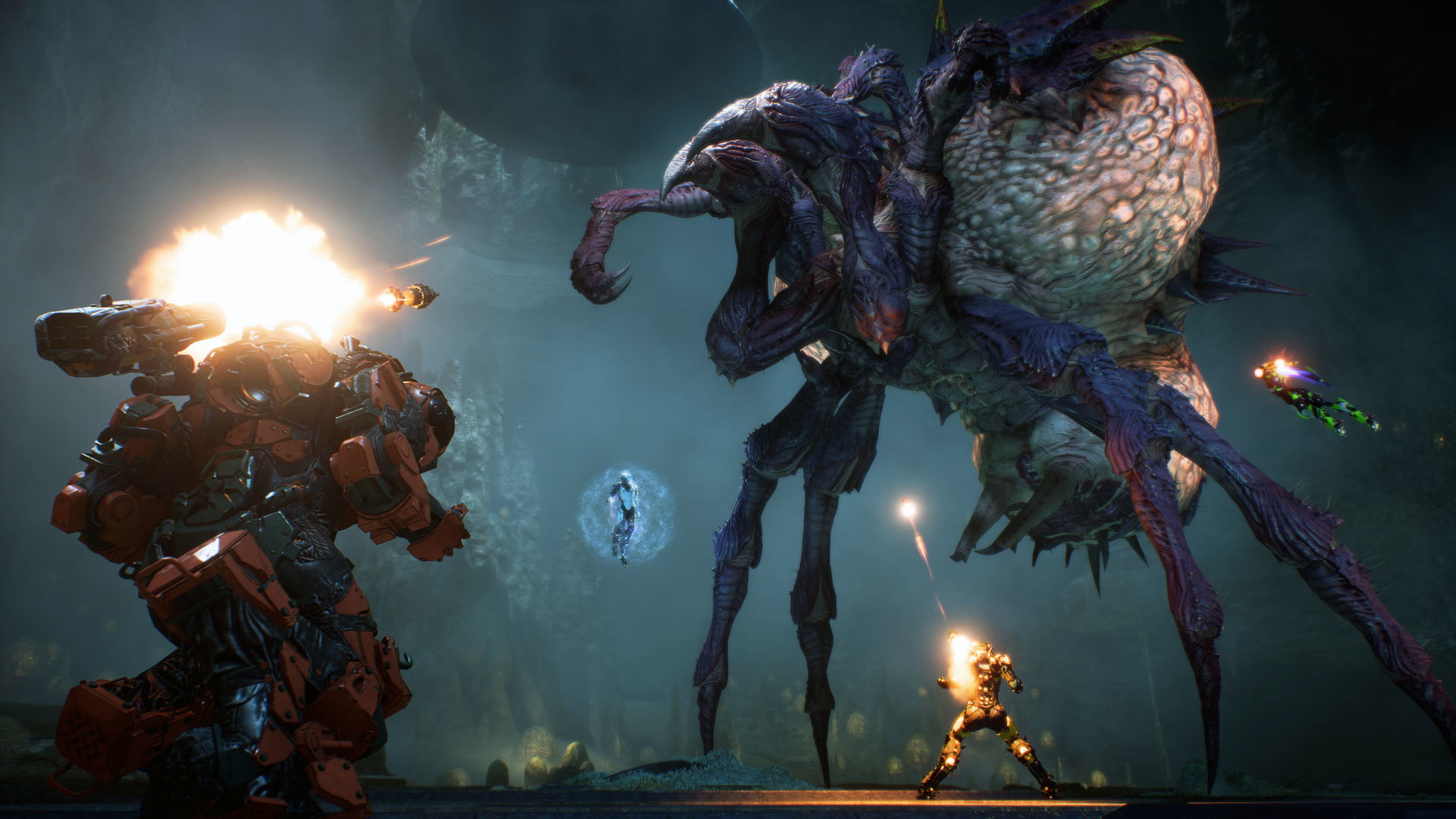Anthem is a game I waited a month to review
While that length of time wouldn’t be unusual for any other game made by BioWare, who are known for their vast, ambitious story-based games, this time, it comes with a huge caveat. That being, Anthem is not just BioWare’s newest game, but it’s also yet another attempt by a publisher to break into the live service genre of games.
From the initial reveal at E3 2017, through two somewhat troubled beta periods, and after finally having touched the final product, it’s immediately clear that whatever BioWare had planned for Anthem initially, eventually transformed into this style of game. That means it needs more time than other games to really find its
The dogpile of negative reviews in the wake of this game’s release
At this point, the live service genre needs no introduction, but for those not in the know, the goal is to make a game that isn’t designed to be finished in a matter of hours but instead engaged for an extended period of time. These games aren’t designed to tell stories that lead us from A to B, but instead world-build and immerse the player in lore to create the illusion of an already lived-in environment. Through weekly, monthly, and even daily challenges, the idea is to engage players in new and dynamic ways through an interconnected, ever evolving shared world, either with, or without other players building their own narrative. It’s an ambitious idea and one that initially excited players with the possibilities that such a game world could achieve. While the expectations were high, however, the reality has mostly fallen short, and led to games that missed the mark in ways that would prove detrimental to the experience overall.
Expectations/Reality
As the most prominent attempts to get this concept off the ground since 2013, games like Destiny, The Division, and Warframe released in states that were less than ideal, to say the least. Destiny, released by Bungie, was fun to play, but fundamentally lacking in its story, usually a strong point for the innovative FPS developer. The Division, by
This is to say that, in this genre, the many who have tried and failed have inadvertently warped the audience’s perception of not only what to expect from this kind of game, but what to expect from a game, period. It seems unthinkable that a game would release in a less than finished state at full price, and then incrementally build itself into the product it should’ve been at launch for a year afterward, but here in 2019, if you were to ask anyone who has engaged with any of the games I just mentioned, the sentiment from the companies seems to be:
“This game will be released broken, but we’ll fix it later”.
That statement, and how it relates to Anthem, will become abundantly resonant the further you get into it as an experience. At E3 2017, despite the lush, gorgeous visuals, Iron Man-
In hindsight, I guess not. Anthem has a story that wants to be meaningful, gameplay that soars above the rest of the experience, and a setting with all of the potential in the world, but some utterly baffling design choices conspire with an unfocused, unfinished foundation that combined, ultimately drag it past the point of enjoyment, and into the realm of wasted potential. BioWare had years to learn from the mistakes of its predecessors, the benefit of hindsight on their side, and somehow still managed to make every mistake regardless, all while innovating towards whole new problems.
A tale of old, marginally retold.
BioWare is legendary for their storytelling prowess, and this is why I and so many others were so excited for Anthem. Having released games such as Knights of the Old Republic, Dragon Age, and Mass Effect, expectations for BioWare to bring us a great story for the first time in this genre were high. It’s odd then, that in Anthem, the story seems to be uncomfortably sharing a space with the gameplay, in a way that makes it feel tacked-on at the last minute.
The disconnect almost immediately begins after you create your character, and launch into the campaign. The game starts off strong enough, with an extended introduction to the Freelancers, a group of mercenaries who pilot Javelins, or mech suits that are able to brave the harsh lands of Bastion. In the first mission, you’re a newly minted rookie in a squad tasked with stopping a Shaper relic called the Cenotaph from creating a Cataclysm that will annihilate all life in existence. Despite the best efforts of you and your team, the mission is ultimately a failure as a defeat at the hands of an Ash Titan forces you to retreat from the Heart of Rage. This causes the people of Fort Tarsis to lose their faith in the Freelancers, causing them
Does that make any sense to you? No? Don’t worry, it doesn’t make sense to me either. Especially when, for all of its bluster, all of its world-building, the story of Anthem ultimately amounts to:
An ancient race made a thing that’s very strong, and unstable, and there’s an arms race to find it before the bad guy uses it to destroy all of everything, ever. Along the way, you’ll meet a group of characters that gradually make the game more interesting, but the race for this thing remains your primary motivation to do anything at all for the next 12 or so hours. Sure, there are a few twists and turns (including one meant to be impactful that ultimately made me laugh out loud), but for the bulk of the game, it gets no more compelling than that.
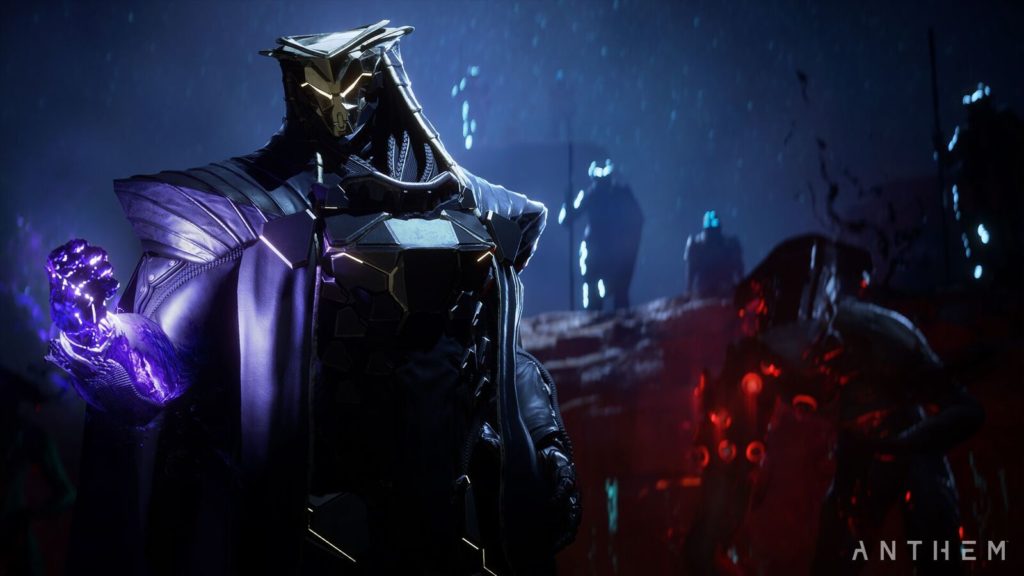
I can appreciate lore and world building like anyone else, and in fact it’s a thoughtful way to flesh out a story when used correctly (especially in a game like this) but Anthem‘s primary problem is that it’s all lore and no actual storytelling. Your character, despite (in a rare turn for this genre) having a voice to interact with others in the story, is a poorly written, basic, generic snarky hero archetype to the point of being groan-inducing. The secondary characters don’t go out of their way to raise the bar much, either, and instead fall back on Marvel Cinematic Universe levels of snark to give themselves an edge where their characterization doesn’t. Though the game does introduce characters with some very lived-in and engaging personalities such as Owen, Matthias, and Haluk, many of the others you meet over the course of the game have nothing to do with the main quest, and engaging with them runs the gauntlet between tedious and meaningless as the game carries on.

In cutscene after cutscene, characters pace back and forth in your field of view, spewing fictional jargon, talking about events in the world you as a player have never witnessed, and discuss things among themselves only they seemingly understand, as you sit there confused and uninformed. Sure, some of them are quirky, most are snarky, and some are just too eccentric to function, but it matters little without any meaningful context to frame the interactions or actually define them in a way that has you able to recognize them by name alone.
As a way to make up these shortcomings it seems, there is a halfhearted attempt in the form of a glossary containing the game’s terminology. However, as Destiny taught us five years ago, it’s no replacement for actually telling a story with characters and stakes that matter, especially when it’s “organized” in a nebulous, labyrinthine way that makes you not want to bother with it at all. BioWare, having missed this lesson, gave us a story whose tone is either painfully inert, inconsistent in ways that can be contradictory, or that just struggles to be compelling at any given time.
The stor often goes through a roulette of beats in a single cutscene (one scene, in particular, goes from intrigue to suspense, to humor, to devastation, to ACTION in the course of 3 minutes). So it constantly begs the question as you play: If BioWare is uninterested in giving me a reason to care about all of this, why should I? If I can’t see the effects our antagonist is having, or could have on the world around us, what am I fighting for? Does any of this matter at all?
Bueller?
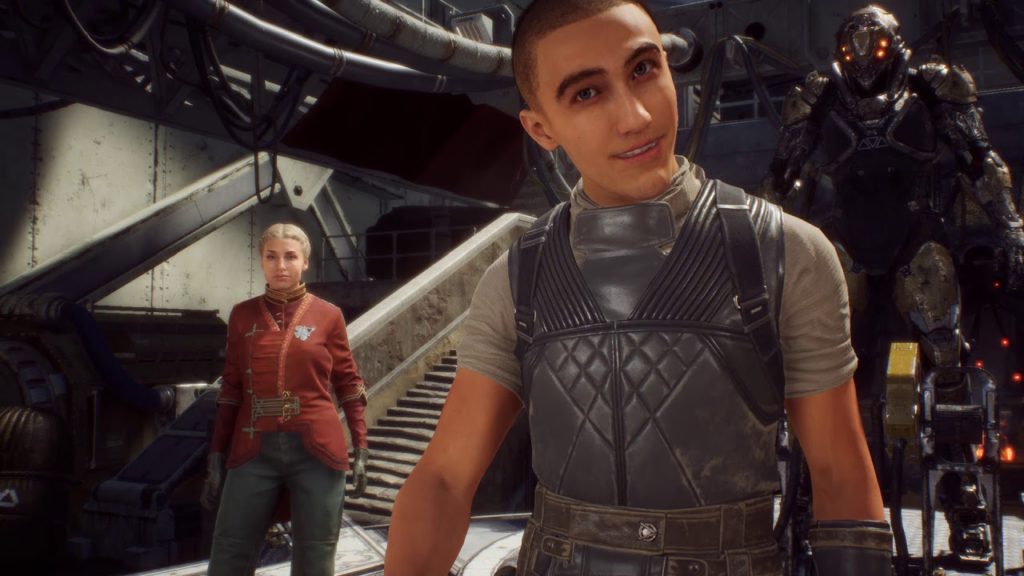
This is all exacerbated by the fact that the bulk of the game’s storytelling takes place in Fort Tarsis, a thematically dry, lifeless world hub that you inexplicably navigate in
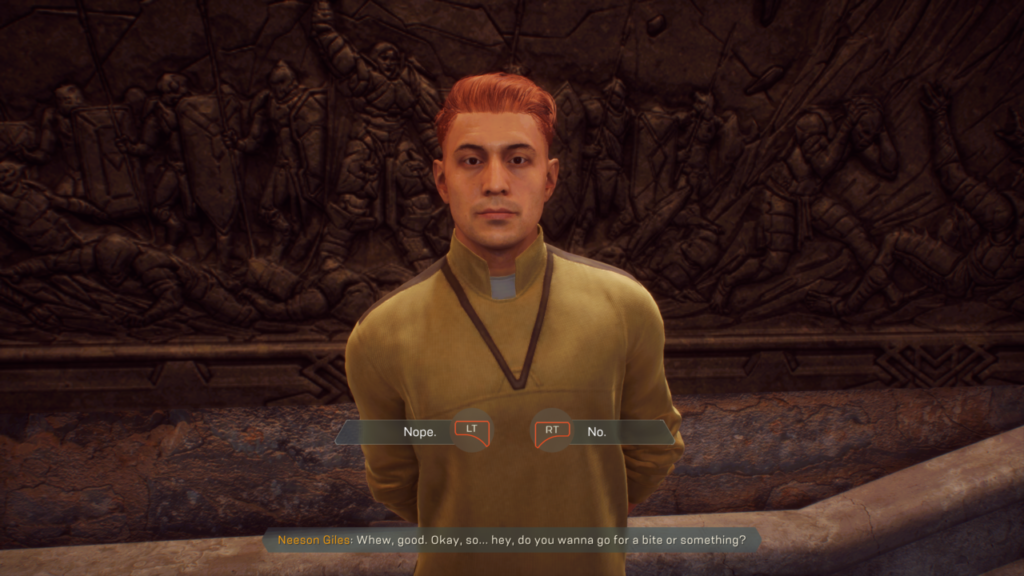
“Do our choices matter? Yes.” – Mark Gamble (Producer, Bioware)
In every conversation, I marveled as I watched a game released in 2019 be devoid of the visually dynamic, Hollywood-style presentation of a game released over a decade ago. Instead, all of that seems to have been replaced with some of the most underwhelming visual
There’s a reason I’ve spent this many paragraphs talking about the story, and presentation as some kind of experience separate from the rest of the game. This is because, for reasons unknown, Anthem has been constructed as some sort of
Stark Contrast
I honestly can’t overstate just how great it feels to experience Bastion for the first time. A lush, gorgeous, ruined world full of unique visual history and constantly changing terrain, Bastion is clearly the star of
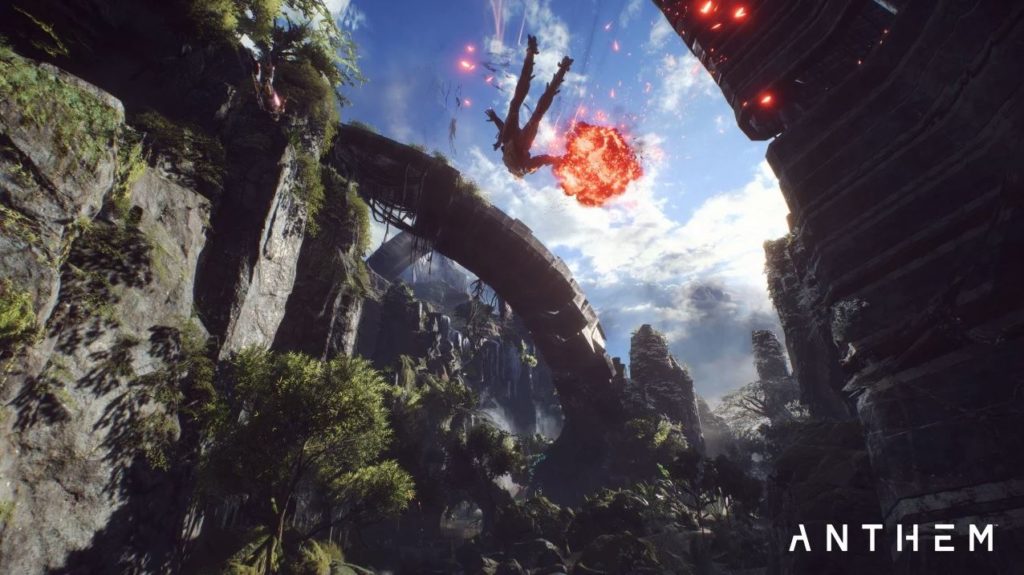
But then, a few missions in, and one inconveniently placed roadblock later that serves to grind the story to a halt (should you play the game, you’ll know exactly what I mean), the cracks begin to show. The mission design, despite taking place in this vast, multifaceted world, doesn’t get any more depth to it once you’ve experienced a few basic templates:
- Defeat all enemies
- Secure a control point and defeat all enemies within it
- Collect data Echoes and return them to a bank
- Collect data Echoes while defeating all enemies
- Collect data Echoes while defending a control point and defeating all enemies
- Solve Matching Block Puzzles
I wish I were
Point being, when done right you simply don’t feel the repetition inherent to those games the way you do here. Main missions feel this way. Side missions feel no different, and in what are supposed to be the penultimate activities in Raid-style uber-missions called Strongholds (of which there are only three), they are simply a mashup of every mission type I just mentioned in a format that can take upwards of an hour to complete.
Much of this could be forgiven if the main point of even playing these missions, the rewards felt anything like… well, rewards, but they don’t either. Though you can customize your Javelin with a wide variety of materials and colors to create your own palette, anything involving actual armor customization is paywalled behind the game’s microtransactions. Meanwhile, weapons and abilities sit as the sole motivator for anyone looking to grind the same levels at different difficulties and play the game for better loot.
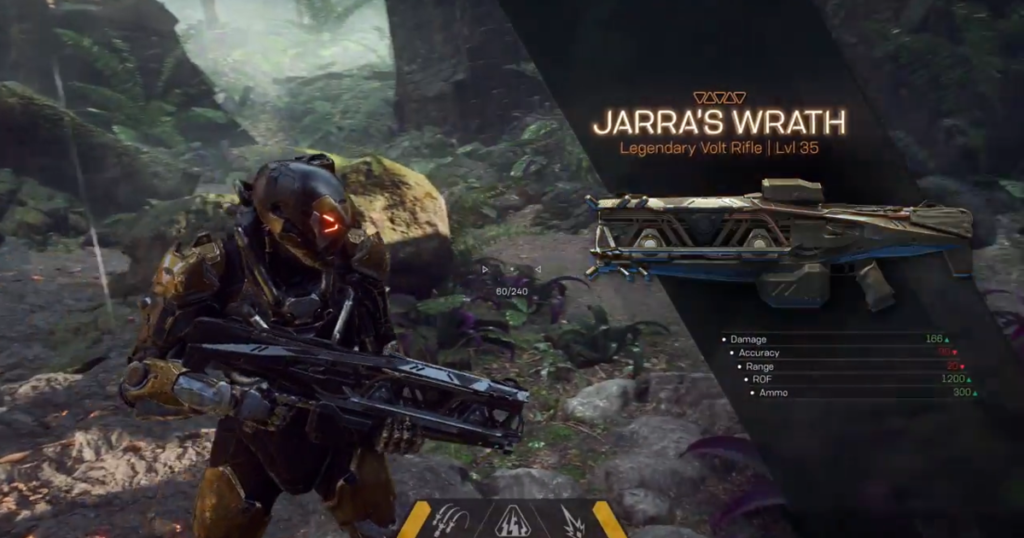
This would be fine if the weapons were distinct and varied, as shown in the 2017 demo, but the reality is, the pool of rifles, cannons, and pistols that you can earn is small, as is the collection of abilities unique to your Javelin. In the end, however, they matter little, since the only true way to level up is to obtain high-powered “Masterwork” or “Legendary” weapons, which only unlock once you reach level 30. Consequently, this leaves the path through levels 1-29 feeling like nothing has changed. It’s an odd thing to overlook during play-testing, and I’m genuinely surprised that no-one at that stage, brought up the fact that you, as the player, feel the same at the beginning of the game as you do mere inches from the conclusion.
In fact, much of the game’s design suggests that there weren’t many perceptive people at the helm of this game at all. The constant contradictions in the design choices are often like a hydra intent on consuming its other heads, instead of working together.
Bastion is vast, vertical, and surprisingly open, but is weirdly segmented by intrusive, static loading screens that break immersion. The game openly encourages multiplayer, but playing in a group is actually restrictive and counterproductive for
I could also devote an entire paragraph to the bugs, glitches, and freezing issues that have plagued the game since launch, but that would make this review even longer, so I’ll instead share a clip of the game freezing 7 times in a row as I made desperate attempts to reconnect to a Stronghold I was kicked from mid-boss fight:
(Spoiler Alert: I didn’t make it back into the game in time, and a random took my team slot via matchmaking. Because I didn’t “finish” the mission, I didn’t recieve any of the loot or bonus experience I had accrued up to that point.)
The most disappointing thing about all of this is that really, all shouldn’t be lost, despite everything I’ve said so far. After all, we are in the live service genre, and the issues I’ve mentioned so far with Anthem‘s story, and gameplay could potentially be fixed or dealt with via updates. The unfortunate reality, however, is that Anthem exhibits serious problems, ones that are so deeply baked into the core of the experience that it may just need a sequel to fix them. I haven’t even taken time to list them all here. Problems like segmented nature of the game, loading issues, story/dialogue presentation, Fort Tarsis as a whole, the inventory and the way it’s handled aren’t problems that a patch will fix completely, or even attempt to rectify in some meaningful way. What we have at launch is the actual foundation of Anthem, the one BioWare was meant to iterate on, cultivate, and grow, and the soil is already poisoned beyond belief.
I wanted to give this game a chance. I played until level 30, shooting around, all too happy to ignore many of the game’s glaring issues because the feeling of flying around was so intoxicating. Playing with friends, I couldn’t have paid less attention to the story, or progression, because the game gave me no reason to care. Anthem is a game that desperately wants to be liked, even loved, and wants a seat at the Live Service table.
However, Anthem is clearly also a game that wasn’t ready to be released, and is woefully undercooked in the areas it shouldn’t have been, leading one to wonder just what BioWare was doing for 6 years if not desperately trying to reconfigure a game meant to be single-player into a multiplayer one at the request of their bosses. It’s sad that what we have left in the end feels like just that, and for the company, it couldn’t be at a worse time either.
As stated, every game that is and will be Anthem‘s primary competition have all grown, expanded and learned from their mistakes to become truly compelling experiences, and EA saw fit to release a game in 2019 that barely reaches the standard of the original Destiny or Warframe. It lacks content, direction, competent design, and fails on nearly every level. I repeat, it was clearly not ready to be released, and shouldn’t have been in the first place.
Knowing the game was in the state it was, and releasing it anyway was a terrible decision, in a basket of many that won’t eventually lead to a path of success as some jaded executive might think. It may in fact just act like a deathblow that leaves the future of the game, and BioWare in serious doubt moving forward. With their roadmap detailing the most significant update to the game coming two months post-release, the game feels like it’s living on borrowed time at best if that piece of content isn’t earth-shattering, or the already existing issues across the board can’t be ironed out before that happens.
In the end, and a few thousand words later, that’s the unfortunate story of Anthem, an undercooked, buggy mess of a gorgeous game with an identity crisis. It tried to piggyback off the popularity of a genre still going through it’s most painful of growing pains and wasn’t nearly prepared to meet even those shaky standards with 6 years of development in the hole
I want to believe that BioWare can eventually pull this game together and make it something truly special, but outside of a full overhaul and sequel, I just don’t see that happening. The catch-22 of it needing to fundamentally improve with a sequel, and the possibility that it may not even get one due to how BioWare has stumbled out of the gate may be too much for Anthem to bear.
Even one month later, the future of Anthem isn’t bright at all. The most disappointing thing about this all is that it had a chance, and it was one EA and Bioware saw fit to squander.

